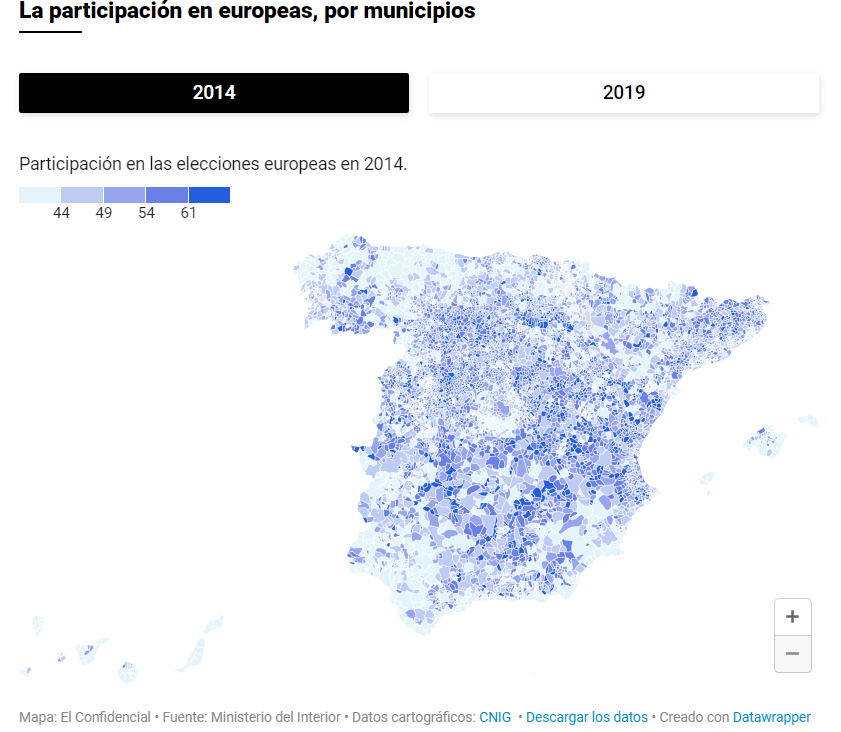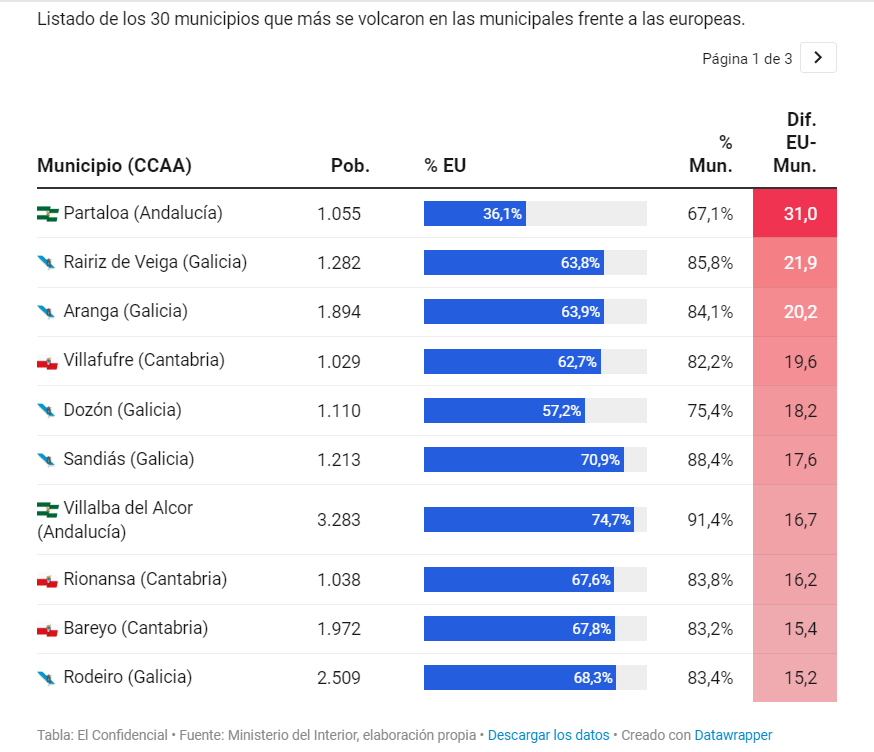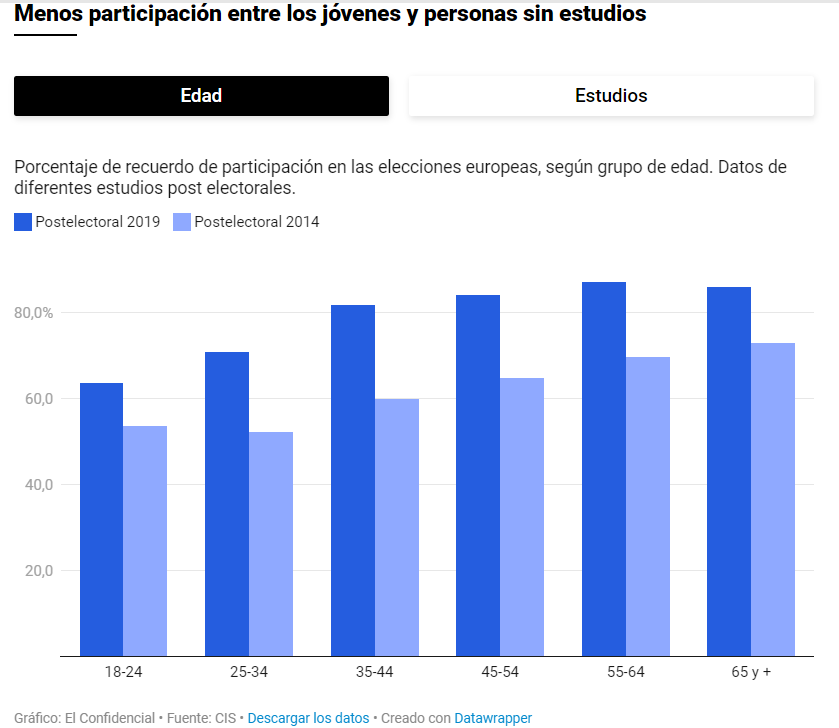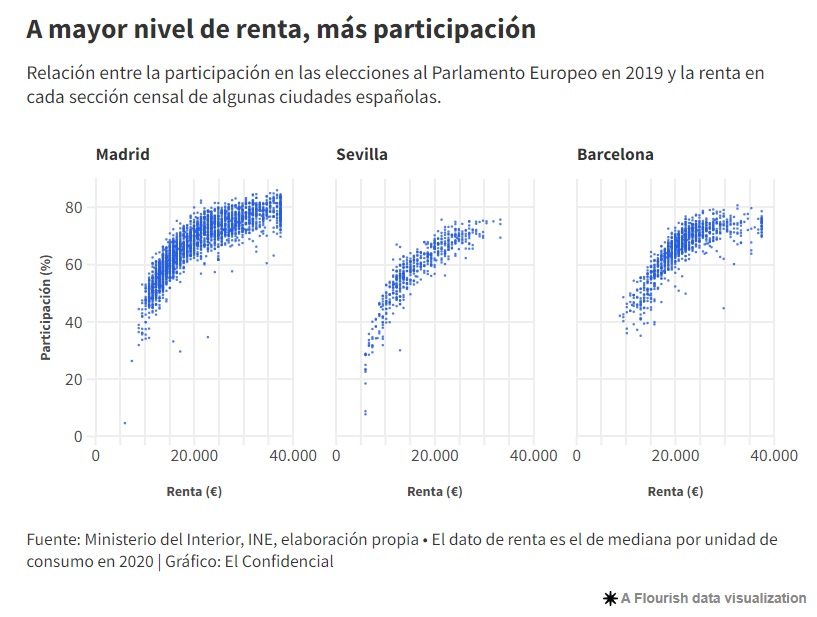The town in Valencia with the highest European election turnout: “We all know each other”
In Rótova's only polling station, the 2014 European elections registered a record turnout of 75%, an exception to the Spanish average. We analyse the vote in these 'secondary elections'.
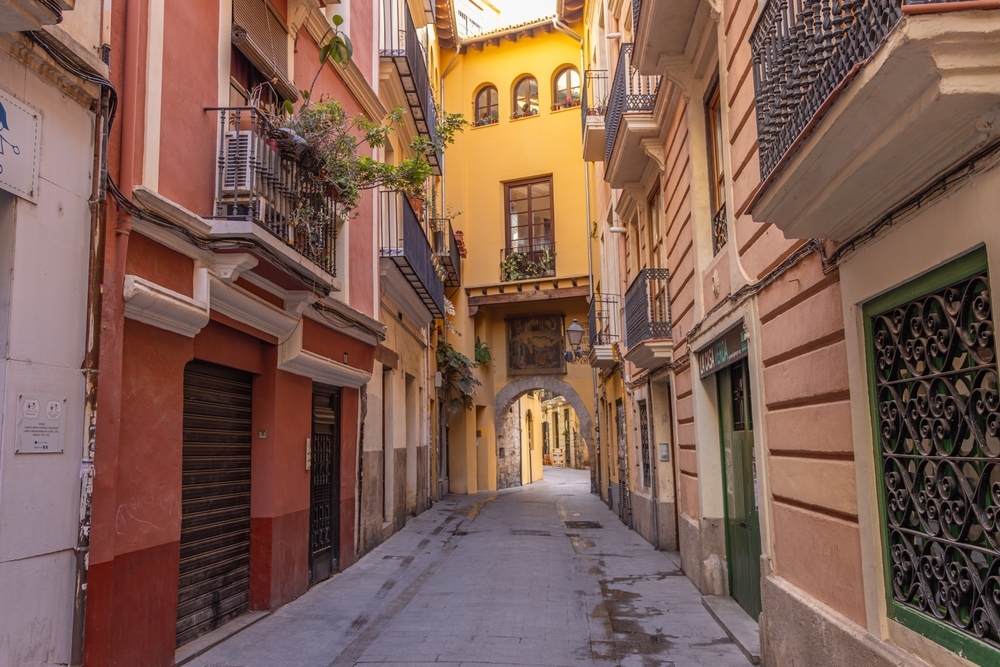
Valencia © jksz.photography/Shutterstock
“In Rótova they are so naïve that they think that voting will fix anything”, says a disbelieving worker at one of the companies located in the Les Masses industrial zone. In ontological terms, it is almost certain that abstention fixes nothing, but both participation and abstention in elections are a free choice in Spain, an individual decision. It is democracy. And in Rótova they exercise it conscientiously in every call to vote, even in the European elections, traditionally prone to greater abstention.
This small inland town in the Valencian region of La Safor, with a population of 1,295 people, according to the 2023 census, has registered the highest turnout in European Parliament elections in recent years. In 2019, when they coincided with municipal and regional elections, turnout exceeded 90%, thirty points higher than the Spanish average. The gap was huge in 2014, when the election was independent. On that occasion, only 45.7% of Spanish residents voted in Spain, but in Rótova, 75% of its residents with the right to vote went to the town’s only polling station.
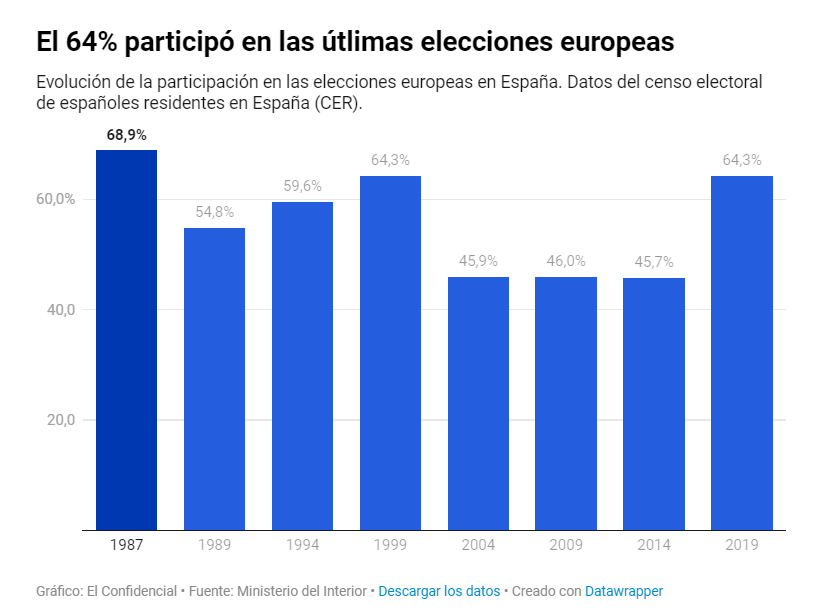
Strategically located in the town’s centre, in the social club next to the town hall, the position of Rótova’s two polling stations that serve its registered voters (just over a thousand) may partly explain the high level of participation.
“I didn’t know that [about record turnout], but here the parties are deeply rooted and we work a lot with residents. We all know each other and there is a lot of direct contact”, explains Jordi Puig, Mayor of the Valencian town and representative of Compromís. Dolores Momparler, spokesperson for the Partido Popular, agrees. “We are all family here and we know where everyone stands. Last night we had a sobaquillo dinner- a Spanish version of a ’pot luck’- with sympathisers and militants and we encouraged them to participate. People are very disappointed by what is happening at a national level but that’s precisely what we tell them: ‘If you want change, you have to go and vote’,” he says.
Apart from occasions when several votes happen simultaneously, the trend in turnout in the European elections is clearly downward. In fact, the European elections continue to be seen in many cases as second or even third order elections. “They are elections for anoraks,” says political scientist Cristina Monge, who recalls that the years with the lowest abstention rates, not counting 1987, were 1999 and 2019, when they coincided with the regional and municipal elections. “If it’s your turn to vote for the mayor, it’s easier to vote for the European Parliament than to go ex profeso“, she sums up.
The political analyst stresses that the low turnout in the European elections is a fact that affects the entire continent. Turnout in these elections has never exceeded 65%, a figure that is also distorted by countries with compulsory voting, such as Belgium, Bulgaria, Greece and Luxembourg.
The countries who participate the most
In the 2014 elections – elections that are more comparable to the current ones as they did not coincide with other elections – in 2,116 municipalities with more than 1,000 inhabitants, less than half of residents turned out to vote. In many cases, the low turnout in the European elections is part of a wider phenomenon of voter abstention, which is more acute in these elections. This is the case in places such as Arona, with around 80,000 inhabitants, where turnout is usually high in general and where less than 40% went to the polls in the last European elections.
“On the last three occasions these elections have not coincided with others, we have seen a majority abstention rate on each occasion”, stresses Carlos Domínguez, Director of Political Research at the pollster 40dB, who insists that we should not make the mistake of making comparisons with 2019, as the context is very different.
Domínguez points to a latent process of erosion of turnout, a more extreme trend in the case of the European elections, but one that shows a downward trend in all types of elections. “The same phenomenon, but a more nuanced one, has also been seen in the general elections“, he points out.
Even when they are held on the same day, there are differences in turnout between municipal and European elections. In 2019, 65.2% of the electorate voted in municipal elections, while 64.3% voted in European elections. It is a small difference in Spain as a whole, but with notable examples when breaking down data for each municipality.
As is often the case, the extremes are registered in small municipalities. This is the case of Partaloa (Andalusia), Rairiz de Veiga and Aranga (Galicia), three municipalities of little more than 1,000 inhabitants where the difference was as much as 20 points more in the municipal elections. In all municipalities with more than 1,000 inhabitants, more than 90% came out to vote “for Spain” than “for Europe”.
And the other way around? Yes, there were also cases where the tables were turned and the turnout in the European elections exceeded that in the municipal elections. There were some 150 localities, including the Castilian municipality of Almazán, with a population of 5,000, where 63.8% of the electorate voted in the European elections, almost 18 points more than the 45.9% who voted in the municipal elections.
Does income influence participation?
Although assigning causes is always complicated, the analysis of voting intentions – in this case, with studies by the Centre for Sociological Research (CIS) – allows us to see a relationship between factors such as age, level of education and income.
The younger the age, the higher the abstention. This is a phenomenon confirmed by the expert from pollster 40dB. “We have been observing for some time that young voters are the ones who participate the least”, confirms Carlos Domínguez.
The trend can also be seen educational background: the lower the level of education, the lower the participation. And it is especially noticeable in income, with a direct relationship: the higher the income, the higher the participation. “There is a clear effect between income and participation,” explains Domínguez. “At a polling level, there is a correlation with income, which in turn has to do with issues such as cultural capital or educational level.
Electoral results when compared with the census (a territorial division below the municipality and even the neighbourhood in cities) support what the surveys point to and the expert corroborates. The relationship is particularly clear when comparing data from large cities, where population size counteracts group composition effects – such as an uneven age distribution in small and ageing municipalities. Thus, it is possible to clearly observe the income-vote correlation, as shown in the graph below.
“The less relevant the perception of the elections is, the more acute the differences become”, the expert points out. Thus, the perception of the European elections as a third order election not only leads to a lower overall turnout, but also increases disparities such as the one between participation rates in the young and old.
The hooligan vote
For Monge, the European elections have three main characteristics: “First, the low turnout. Second, we are electing MEPs, so it is a campaign on international issues. And thirdly, the “hooligan vote” is on the rise or has more echo”, he sums up. This type of vote is one in which people vote for options that they would not consider if they had to elect their mayor or the Prime Minister of Spain, “but it can also be used as a punishment vote”, he warns. “In fact, Podemos emerged in the European elections, driven by a dissatisfied left”.
Domínguez agrees that these elections boost the “outsider” vote, a protest or rebel vote that the electorate can risk because the effects do not seem as direct as when electing a mayor or Prime Minister. However, the key, for this expert, lies in the way in which people literally go to the polls.
“The most relevant thing is whether or not they are accompanied by other elections”, insists Domínguez. The expert speaks of a “contamination” effect whereby the vote in European elections is dragged along by the ballot chosen in other elections.
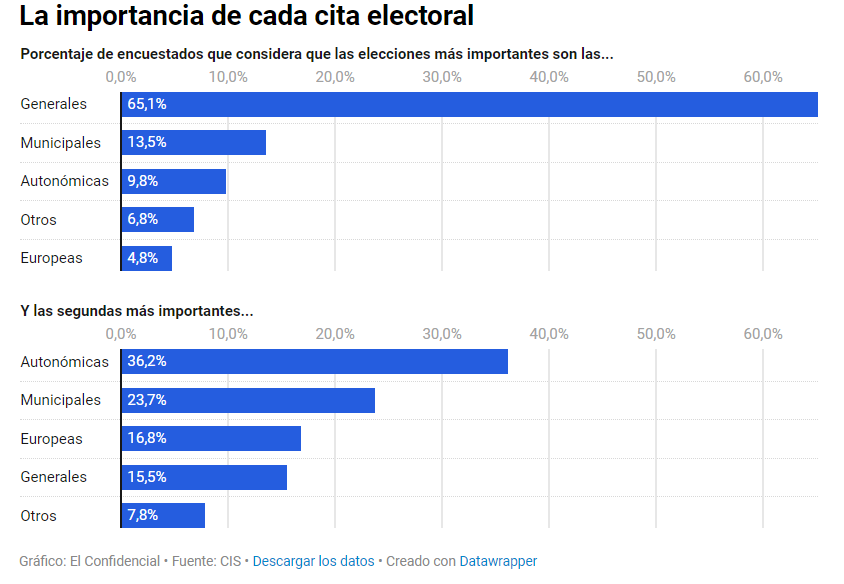
In the last pre-electoral CIS survey on the European Parliament elections, these differences were evident. Some 65% of those surveyed considered the general elections to be the most important, while only 5% thought that the European elections were the most important. Likewise, 63.5% of Spaniards put issues relating to Spanish politics first, compared with 30% who put European politics first. 35.7% always vote the same in the general elections as in the European elections, although 35.5% see it as “convenient” to vote for a different party than they normally would in general elections.
“What we see is that on occasions when there have been simultaneous elections, there has been a greater concentration of the vote in the majority parties. However, in independent European elections, the tendency is the opposite, a greater fragmentation”. This fragmentation of the vote, explains Domínguez, means that the dangers when estimating are more in overestimating certain minority parties, which often appear over-represented in these samples.
From the point of view of electoral forecasting, the European elections present additional challenges. “They are probably the most complicated elections to forecast and predict the outcome,” says Domínguez. “This is largely because of the turnout”.
The 40dB expert explains how social desirability bias – our tendency to respond thinking that someone is reading and judging us – makes the intention to participate in elections seem greater, as it is considered a socially desirable behaviour. “Many people who will not vote in the end still say they will vote. The first step is to know who is lying”.
Original source: https://www.elconfidencial.com/espana/comunidad-valenciana/2024-06-05/pueblo-valencia-mas-vota-europeas_3896116/
Chasing the vote, house to house
Back in Rótova, the domestic ‘bipartisanship’ is palpable as soon as one enters the town centre from the CV-60 along Jaume I Road. Billboards for the European elections line the street, with cardboard panels hanging from the lampposts. The blue Vota PP posters and those bearing the slogan Plantem Cara, with the photo of the Compromís candidate on the Sumar list, the former Minister of Education, Vicent Marzà, are interspersed along the avenue.
In small municipalities like this one, the parties’ efforts to appeal to voters are more effective. A resident of the Valencian town acknowledges that phone calls between friends to encourage people to go to the polling station are commonplace. “We have always told our children that they have to participate. Let them go and vote; let them vote for whoever they want, but let them go”, explains Inma, a resident of the village as she shares lunch with other neighbours at the social club.
This Sunday we will see if these calls to vote have an effect and Rótova once again defies the absenteeism of the majority of Spaniards in European elections.

